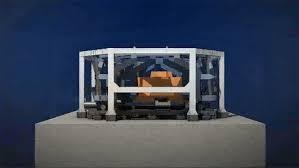Vibration Control System Market Emerging as Critical Component in High-Rise Buildings and Earthquake-Prone Regions

The global vibration control system market is emerging as a cornerstone in modern construction, particularly for high-rise structures and buildings located in seismic zones. As urban landscapes evolve with taller and more complex structures, the need for safety, comfort, and structural resilience has never been greater. Vibration control systems are now essential tools in addressing challenges related to wind-induced sway, ground motion from earthquakes, and everyday mechanical vibrations.
1. Rise of Tall Buildings and Seismic Challenges
With increasing urban density, vertical construction is becoming the norm in cities worldwide. However, tall structures are inherently more susceptible to dynamic forces such as:
-
Wind sway causing lateral movement
-
Seismic activity generating shockwaves from ground acceleration
-
Vibrations from mechanical equipment, road traffic, or nearby rail systems
Left unaddressed, these forces can lead to structural fatigue, discomfort for occupants, damage to critical systems, and in extreme cases, catastrophic failure.
2. Vibration Control Systems: Ensuring Safety and Stability
Vibration control systems are designed to absorb, isolate, and dissipate kinetic energy caused by external or internal forces. In high-rise and earthquake-prone structures, they serve several key functions:
-
Reduce lateral movement during wind or seismic events
-
Protect the integrity of structural and non-structural components
-
Minimize internal vibrations from elevators, HVAC, and mechanical systems
-
Enhance occupant comfort by limiting building sway and motion perception
Advanced vibration control systems include base isolators, tuned mass dampers (TMDs), seismic bracing, and energy dissipation devices—all engineered to safeguard buildings from a variety of vibrational threats.
3. Tuned Mass Dampers and Base Isolation: The Backbone of Resilience
Tuned Mass Dampers (TMDs)
Installed near the top of skyscrapers, TMDs are large masses suspended by springs and dampers. When a building sways due to wind or earthquakes, the TMD moves in the opposite direction, neutralizing vibration.
Famous buildings like Taipei 101 and the Shanghai Tower have made TMDs a standard feature in supertall structures.
Base Isolation Systems
These systems decouple the building from ground motion during earthquakes. Installed between the foundation and superstructure, base isolators absorb seismic energy before it travels up the building, significantly reducing internal stresses and potential damage.
Base isolation is increasingly used in both new construction and seismic retrofits for hospitals, schools, and government facilities.
4. Applications in Earthquake-Prone Regions
In regions like Japan, California, Turkey, and Chile—where seismic activity is a constant threat—vibration control systems are considered vital infrastructure components. These systems:
-
Ensure life safety during earthquakes
-
Reduce post-disaster repair costs
-
Enable faster re-occupancy of essential buildings
-
Meet or exceed international building codes such as IBC, Eurocode 8, and Japanese Seismic Design Guidelines
Many governments also incentivize or mandate the use of such systems in public buildings and critical infrastructure.
5. Enhancing Occupant Comfort in High-Rise Living and Workspaces
Even in non-seismic zones, tall buildings are prone to swaying due to high winds or mechanical vibrations. While such movements may not threaten structural integrity, they can cause:
-
Nausea or motion sickness in sensitive occupants
-
Misalignment of sensitive equipment in laboratories or offices
-
Increased noise and discomfort from vibrating walls or fixtures
By incorporating motion isolation systems, developers can ensure that high-rise buildings offer not only safety but also premium comfort—an increasingly important factor in luxury real estate and commercial properties.
6. Technological Advancements Driving Market Growth
Modern vibration control technologies are evolving with innovations such as:
-
Smart dampers that adjust stiffness and damping in real time based on wind speed or seismic activity
-
AI and IoT-enabled monitoring systems that track building motion and issue early warnings
-
Compact, modular devices for easy integration into both new and existing buildings
-
Advanced materials like shape memory alloys and viscoelastic compounds offering superior energy absorption
These technologies are making vibration control systems more efficient, responsive, and adaptable to diverse building types.
7. Market Outlook: Urbanization and Resilience Demands
The vibration control system market is poised for continued growth due to:
-
Rapid urbanization and the global boom in high-rise construction
-
Stricter building codes and seismic regulations
-
Increasing retrofitting of older buildings in seismic regions
-
Rising demand for smart, resilient, and occupant-friendly infrastructure
-
Heightened focus on sustainability and lifecycle durability
As cities aim for smarter and more disaster-resilient architecture, vibration control systems will become foundational in the design and maintenance of high-performance structures.
Conclusion
The vibration control system market is rapidly emerging as a critical enabler of safe, stable, and comfortable high-rise construction, particularly in earthquake-prone regions. By leveraging advanced damping technologies and intelligent monitoring systems, architects and engineers can design buildings that not only meet safety standards but also elevate the experience of occupants. As the built environment continues to scale vertically and complexity grows, vibration control solutions will remain at the forefront of resilient and future-ready infrastructure development.
- Art
- Causes
- Crafts
- Dance
- Drinks
- Film
- Fitness
- Food
- Игры
- Gardening
- Health
- Главная
- Literature
- Music
- Networking
- Другое
- Party
- Religion
- Shopping
- Sports
- Theater
- Wellness


